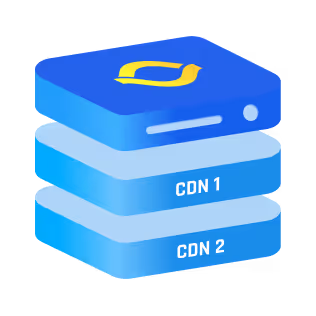Do DNS Providers Offer Protection Against Malicious Websites?
Table of contents
Yes, DNS providers often offer protection against malicious websites. They do this by blocking access to harmful domains, filtering suspicious traffic, and providing tools to safeguard against DNS-based attacks.
1. DNSSEC (Domain Name System Security Extensions)
DNS spoofing (or cache poisoning) is one of the most dangerous DNS threats. Attackers inject fraudulent DNS records into a resolver’s cache, redirecting users to malicious websites.
DNSSEC is the gold standard for protecting against this.
- How DNSSEC Works:
- DNSSEC digitally signs DNS records with cryptographic keys.
- When a resolver queries for a domain, it verifies the authenticity of the response using these signatures.
- If the signature doesn’t match, the resolver discards the response.
- Real-World Protection Example: Suppose a user tries to visit their bank’s website, bank.com. Without DNSSEC, a poisoned cache could redirect them to a fake bank.com. With DNSSEC, the resolver would detect the mismatch and block the fraudulent site.
2. DDoS Mitigation
Distributed Denial of Service (DDoS) attacks target DNS servers to overwhelm them with traffic, rendering services unavailable. DNS providers implement multiple layers of defense against these threats.
- Rate Limiting and Traffic Filtering:
- DNS providers analyze query patterns to identify unusual spikes.
- Known malicious IPs or abnormal traffic volumes are blocked outright.
- Anycast Networks:
- Traffic is distributed across multiple DNS servers in different locations.
- If one server experiences an attack, others pick up the load, ensuring uninterrupted service.
- Example of Protection: In an amplification attack, an attacker sends small DNS queries that generate large responses, flooding the victim. DNS providers block these by filtering queries from suspicious or spoofed IPs and refusing to process overly large responses.
3. Recursive DNS Filtering
Recursive DNS resolvers often act as the first line of defense. These resolvers intercept and block harmful requests before they reach the intended destination.
- Malicious Domain Databases:
- DNS providers maintain extensive lists of known phishing sites, malware domains, and botnet servers.
- When a user queries for a flagged domain, the provider blocks the request or redirects it to a safe warning page.
- Real-Time Threat Intelligence:
- Providers collaborate with cybersecurity firms to update malicious domain lists constantly.
- Machine learning analyzes domain activity to detect newly emerging threats.
- Example of Protection: A user clicks on a phishing link in an email. The DNS provider blocks the query to the malicious domain, preventing the connection and protecting the user.
4. Protection Against DNS Tunneling
DNS tunneling is a covert channel for attackers to exfiltrate data or control malware. It encodes malicious communications in DNS queries, bypassing traditional firewalls and detection systems.
- How Providers Mitigate DNS Tunneling:
- Anomaly Detection: DNS providers monitor query patterns to spot unusual activity, such as frequent queries to obscure or randomly generated domains.
- Traffic Inspection: Advanced tools inspect DNS query payloads for encoded data or command-and-control signals.
- Example of Protection: If malware on a user’s system uses DNS queries to send stolen data to an attacker’s server, the provider detects the suspicious traffic pattern and blocks it.
5. Defending Against Domain Generation Algorithms (DGAs)
Attackers use DGAs to generate thousands of random domain names, making it harder to block malicious domains. This tactic is commonly used by botnets and malware.
- How Providers Block DGAs:
- Machine Learning Models: Providers train models to identify and block DGA-generated domains based on patterns like randomness or short lifespans.
- Blacklist Automation: Suspicious domains identified by the models are automatically added to blocklists.
- Example of Protection: A botnet attempts to communicate with xyz123abc.com, a domain generated by a DGA. The provider’s algorithm flags and blocks the domain before it can be resolved.
6. DNS Query Rate Limiting and Abuse Detection
Attackers may exploit DNS servers by sending high volumes of queries or malformed requests to overload them.
- Query Rate Limiting:
- Providers set thresholds for the number of queries allowed from a single IP address within a given time.
- Excessive requests are dropped or rate-limited to prevent abuse.
- Malformed Query Detection:
- DNS servers analyze incoming requests for compliance with DNS protocol standards.
- Malformed queries are flagged as potential abuse and blocked.
- Example of Protection: During a bot attack, hundreds of thousands of queries are sent to a DNS resolver. The provider identifies the pattern and blocks traffic from offending IPs, maintaining service for legitimate users.
7. Global Traffic Distribution with Anycast
Anycast routing plays a significant role in maintaining DNS availability during attacks or traffic spikes.
This technique distributes DNS queries across a network of servers, ensuring no single server becomes a bottleneck.
- How Anycast Helps:
- Queries are routed to the nearest or least-congested server.
- If one server goes offline, traffic is automatically rerouted to other servers in the network.
- Example of Protection: A DDoS attack targets a specific DNS server. With Anycast, the traffic spreads across multiple servers, diluting the impact and keeping the system online.
8. DNS Firewall Integration
DNS firewalls act as an additional layer of protection, filtering malicious traffic before it reaches the DNS infrastructure.
- Capabilities of DNS Firewalls:
- Block queries to known malicious domains.
- Prevent DNS tunneling and exfiltration.
- Stop queries to domains associated with botnets or malware.
- Example of Protection: If an infected device tries to contact a botnet command server, the DNS firewall blocks the query, breaking the communication link.
What to Realistically Expect from a DNS Provider
DNS providers offer robust protection, yes, but it’s important to understand what they realistically deliver and where their limitations lie:
- High Accuracy, Not Perfection:
- DNS providers block known malicious domains effectively, but they rely on up-to-date threat intelligence.
- What to Expect: Occasionally, new or unknown threats may bypass protections until detected and added to blocklists.
- DNSSEC Implementation:
- Not all domains support DNSSEC. While a provider can offer DNSSEC validation, its effectiveness depends on whether domain owners enable it.
- What to Expect: Protection against spoofing for supported domains, but gaps for non-compliant domains.
- Scalability During Attacks:
- Providers with Anycast networks can absorb large DDoS attacks, but extreme, prolonged attacks may still cause minor delays.
- What to Expect: Resilience for most attacks but potential minor performance degradation under massive load.
- Customizable Filtering:
- Enterprise-level providers allow administrators to set policies for blocking specific content categories or domains.
- What to Expect: Full control for corporate use but limited customization in free or basic plans.
- No 100% Guarantee Against Tunneling:
- DNS tunneling is complex and harder to detect in real-time.
- What to Expect: Mitigation of obvious patterns but potential challenges with advanced or encrypted tunneling.
- Proactive Monitoring and Alerts:
- Advanced services offer logs and analytics for visibility into threats.
- What to Expect: Real-time insights into DNS activity, allowing quicker responses to incidents.


.png)
.png)
.png)